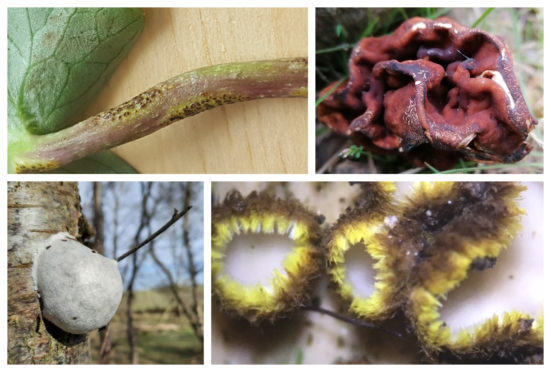Moon poo, bitter chocolate rust and common grey discos might not sound like something you would find in your garden.
But they are just some of the fascinating fungi a north-east research organisation says people be on the look-out for during lockdown.
The Grampian Fungus Group (GFG) has encouraged residents looking for something different to do while stuck at home to have a search of their garden for interesting mushrooms and other colourful discoveries.
Established in 1997, the GFG aims to add to the scientific understanding of where specific kinds of fungus live, in order to help protect areas where vulnerable and rare species may live.
Last month, members of the group from across the north-east took part in a nation-wide “Lockdown Fungi Foray” run by the British Mycological Society (BMS) in their gardens, where they discovered 21 individual species, from fist-sized false morels to poisonous, yellow-fringed fungus.
Helen Baker, from the GFG, said: “Most folk think that you can only get fungi in the autumn, but that’s not true, and not only do we get big spring fungi like St George’s mushrooms and morels, we get lots of smaller fungi all through the year.
“Nearly every plant has at least one species of fungus that grows only on it, either the stems, fresh leaves, or on almost any part of a plant after it has died back – most cause the plant no long-term harm.”
Click here to find out more.










